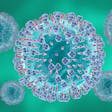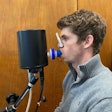
Researchers at the Mayo Clinic have identified a molecular “switch” in the lungs that helps them decide when to repair tissue and fight infection. This discovery could help guide future regenerative therapies for chronic lung diseases, such as COPD, pulmonary fibrosis and severe viral infections like COVID-19.
The study, “A Molecular Circuit Regulates Fate Plasticity in Emerging and Adult AT2 Cells” was published in Nature Communications.
“We were surprised to find that these specialized cells cannot do both jobs at once,” said senior author Douglas Brownfield, PhD, in a news release. “Some commit to rebuilding, while others focus on defense. That division of labor is essential. And by uncovering the switch that controls it, we can start thinking about how to restore balance when it breaks down in disease.”
The research focuses on alveolar type 2 (AT2) cells, which both protect the lungs and serve as backup stem cells. They produce proteins that keep air sacs open for breathing, but they can also regenerate the thin alveolar type 1 (AT1) cells that form the surface for oxygen exchange.
Scientists have known for decades that these cells often fail to regenerate properly in lung diseases like COPD and pulmonary fibrosis. What they did not know was how AT2 cells lose their stem cell capacity.
The team used single-cell sequencing, imaging, and preclinical injury models to map the developmental life history of AT2 cells. They found that newly formed AT2 cells stay flexible for about one to two weeks after birth before “locking in” to their specialized identity.
That timing is controlled by a molecular circuit involving three key regulators: PRC2, C/EBPa and DLK1. The researchers showed that of them, C/EBPa, acts like a clamp that suppresses cell activity. In adult lungs, AT2 cells must release this clamp to regenerate after injury.
That same switch also directs whether AT2 cells repair lung tissue or defend against infection. That helps explain why infections often slow recovery from lung disease.
“When we think about lung repair, it’s not just about turning things on — it’s about removing the clamps that normally keep these cells from acting like stem cells,” said Dr. Brownfield, who is an assistant professor of biochemistry and molecular biology and assistant professor of medicine at the Mayo Clinic. “We discovered one of those clamps and how it times the ability of those cells to repair.”
That discovery highlights potential new targets for regenerative medicine. C/EBPa-targeted drugs, for example, could help AT2 cells rebuild lung tissue more effectively or reduce scarring in pulmonary fibrosis.
“The research brings us closer to being able to boost the lung’s natural repair mechanisms, offering hope for preventing or reversing conditions where currently we can only slow progression,” said Dr. Brownfield.
The findings could also help guide earlier detection, helping clinicians identify when AT2 cells are stuck in one state and unable to regenerate. This, in turn, could lead to new biomarkers for lung disease. It also opens the door to potential treatments for organ failure prevention and restoration through regenerative medicine.
The team is currently testing strategies to remove the repressive clamp on human AT2 cells, expand them in culture and potentially use them for cell replacement therapy.























